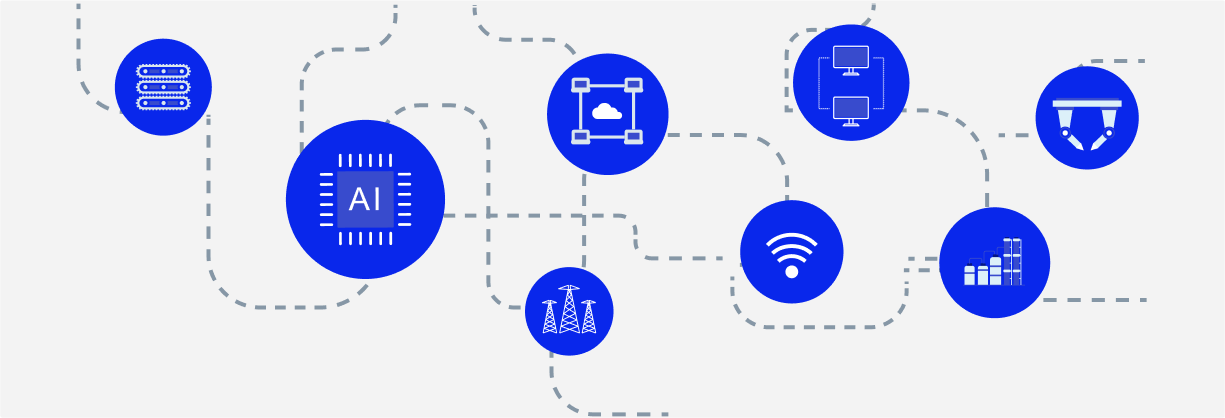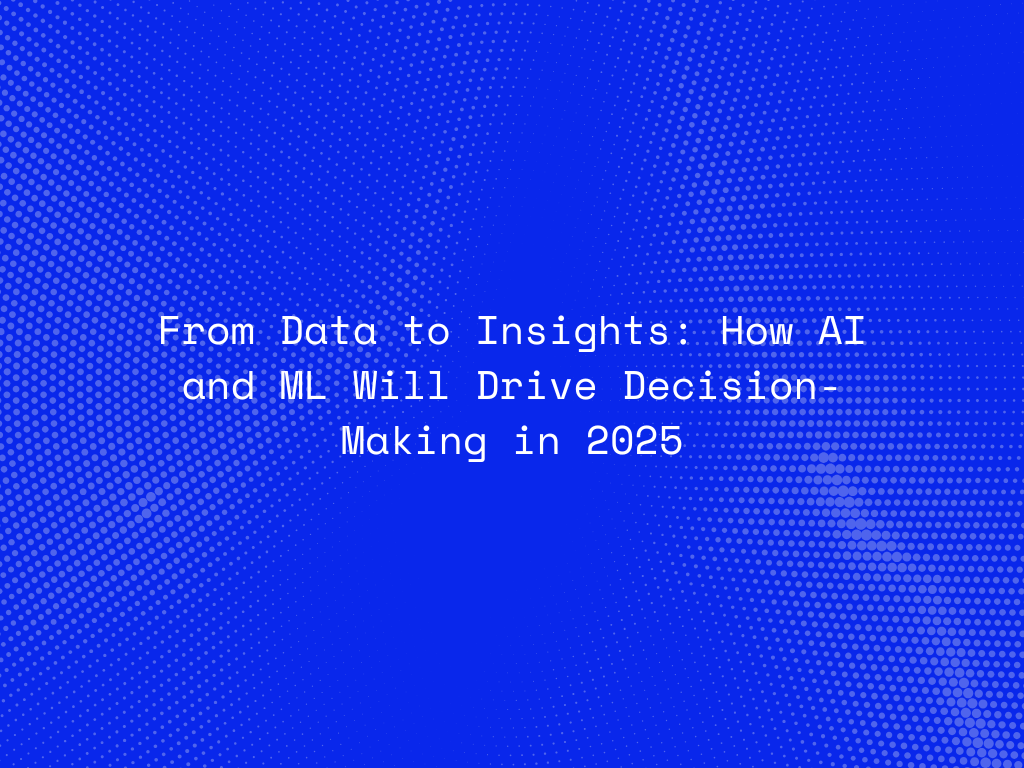As we move towards a future dominated by digital transformation, Artificial Intelligence (AI) and Machine Learning (ML) are set to play pivotal roles in shaping decision-making processes across industries. The sheer volume of data generated daily is staggering, and the challenge lies in transforming this raw data into actionable insights. AI and ML are bridging this gap, empowering businesses to make smarter, faster, and more informed decisions.
In 2025, the integration of AI and ML into decision-making will no longer be optional; it will be a competitive necessity. Let’s explore how these technologies will redefine strategies, operations, and innovations across sectors.
The Evolution of Decision-Making with AI and ML
Traditional decision-making relied heavily on intuition, experience, and historical data analysis. While these methods provided value, they lacked scalability, real-time insights, and the ability to adapt to rapidly changing conditions. AI and ML have revolutionized this process by automating data analysis, identifying hidden patterns, and making predictions with remarkable precision.
By 2025, decision-making will be driven by systems that not only analyze historical data but also adapt and learn from real-time inputs, enabling businesses to stay ahead of the curve.
Key Areas Where AI and ML Will Impact Decision-Making in 2025
1. Real-Time Decision-Making
AI-powered systems will analyze massive data streams in real-time, enabling instant decision-making. For instance, in the financial sector, AI will detect market trends and execute trades within seconds, maximizing returns while minimizing risks.
2. Predictive Analytics for Proactive Decisions
Predictive analytics, powered by ML, will help businesses anticipate future trends and behaviors. Retailers, for example, will forecast customer demands and optimize inventory, while healthcare providers will predict disease outbreaks and allocate resources accordingly.
3. Personalization and Customer Engagement
AI will revolutionize customer experience by delivering hyper-personalized interactions. By analyzing user behavior, preferences, and feedback, businesses can tailor products and services to individual needs, boosting satisfaction and loyalty.
4. Operational Efficiency and Cost Optimization
AI and ML algorithms will streamline operations, identify inefficiencies, and suggest cost-saving measures. In manufacturing, predictive maintenance will minimize downtime, while in logistics, AI will optimize delivery routes and schedules.
5. Enhanced Risk Management
AI will transform risk assessment by identifying potential threats and providing mitigation strategies. For instance, in cybersecurity, AI systems will detect and neutralize threats before they escalate, safeguarding sensitive data and systems.

Benefits of AI-Driven Decision-Making
- Accuracy and Precision: AI eliminates human errors, ensuring decisions are data-driven and reliable.
- Speed: Real-time processing allows businesses to respond to opportunities and threats immediately.
- Scalability: AI systems can handle vast datasets, making them suitable for businesses of all sizes.
- Adaptability: Machine learning models improve over time, adapting to new data and scenarios.
- Innovation: By automating routine tasks, AI frees up resources for strategic thinking and innovation.
Challenges in AI and ML Decision-Making
While the benefits are immense, implementing AI and ML for decision-making is not without challenges:
- Data Privacy: Ensuring data security and compliance with regulations like GDPR is crucial.
- Bias in AI Models: Biased data can lead to skewed insights and unfair decisions.
- Integration Issues: Seamlessly integrating AI systems with existing workflows requires significant effort.
- Skill Gaps: Businesses need skilled professionals to build, manage, and interpret AI systems.
Addressing these challenges will be critical for organizations looking to harness the full potential of AI and ML.
How Businesses Can Prepare for 2025
- Invest in Data Infrastructure: High-quality data is the foundation of effective AI systems.
- Upskill Employees: Train teams to work with AI tools and interpret their outputs effectively.
- Adopt Ethical AI Practices: Ensure AI systems are transparent, fair, and free from biases.
- Collaborate with Experts: Partner with AI and ML specialists to develop tailored solutions.
- Start Small, Scale Gradually: Begin with pilot projects to demonstrate ROI before scaling up.
The Future of AI-Driven Decision-Making
In 2025, AI and ML will go beyond assisting in decision-making; they will become indispensable partners in strategic planning and execution. Innovations like explainable AI (XAI) will make AI systems more transparent, enabling decision-makers to understand and trust their insights.
Additionally, advances in natural language processing (NLP) will allow AI to interpret unstructured data like customer reviews and social media posts, further enriching decision-making capabilities. Businesses that embrace these technologies will lead their industries, while those that lag behind risk being left in the dust.
Conclusion
AI and ML are revolutionizing decision-making by transforming raw data into actionable insights. As these technologies become more sophisticated, they will drive efficiency, innovation, and competitive advantage across industries. By 2025, organizations that leverage AI-powered decision-making will not only thrive in a data-driven world but also redefine what it means to be successful.
The time to embrace AI and ML is now. Businesses that invest in these technologies today are laying the groundwork for a smarter, more agile, and more prosperous future.




